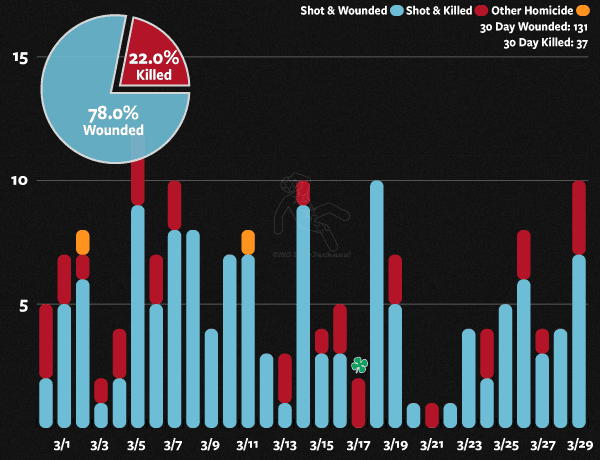Probably going a little astray here but was looking at reports of the number of civilians killed and wounded in the gun violence in Chicago.
It is reported that in the last 30 days, 37 people were killed and 131 were wounded. This comes out to a wounded-to-killed ratio of 3.54-to-1 or a lethality figure of 0.22. This is kind of a high wounded-to-kill ratio for direct fire weapons.

Playing with the database (see: Chicago Crime, Murder & Mayhem | Criminal Infographics | HeyJackass! | Illustrating Chicago Values) show that in 2022 there were 665 shot and killed and 2937 shot and wounded for a wounded to killed ratio of 4.42 or lethality of 0.23.
For example, in War by Numbers, pages 184-187, I have various reports from WWII of lethality of rifles of 0.32, for infantry projections of 0.30, for gunshot of 0.39, for small arms of 0.34 or 0.38 included died of wounds, of small arms in Korea of 0.26, of small arms in Vietnam of 0.49 or 0.30 including carded-for-record, of “low-velocity bullets”: in Northern Ireland of 0.08, of “high-velocity bullets” in Northern Ireland of 0.37, of bullets in 1982 Israeli-Lebanon War of 0.31, of small arms in the 1982 Israeli-Lebanon War of 0.28. Weighing all ten data sets equal: let’s say: 0.314. This is a wounded-to-killed ratio of 3.18 as caused by small arms.
Now, a civilian environment is different that a combat zone. To start with the mix of weapons used is different. Lots of pistols, Second, the people tend to receive medical attention quicker than on a battlefield. On the other hand, some people are shot multiple times on the street, and some shootings end with a “kill shot.” Still, the wounded to killed ratio is 3.54-to-1. Of course, not sure if all the wounded are counted either. Are the wounded who do not need hospital attention counted? Are some of the wounded who need hospital attention also not counted because they choose to avoid the hospital (and the authorities)?
Artillery (fragmentation wounds) tend to have a higher wounded-to-kill ratio that wounds from gunfire (for example 0.11, 0.19, 0.27 or 0.18, 0.22 or 0.26, 0.34, 0.14 or 0.07, 0.13, 0.11 and 0.21 for an average of 0.196 or a wounded-to-killed ratio of 5.11-to-1). In convention combat, artillery tends to be the cause of the majority of wounds.
I do not know the accuracy or providence of the data I am accessing. It is discussed on the website I am referencing (Chicago Crime 2022 Archives – Criminal Infographics – HeyJackass!). Does killed only include those who are dead when they have arrived in the hospital, or does that database include those who died after they arrived (including days or weeks after they arrived)?
Thanks to Abdulelah Almarri for pointing me to the Chiraq data.
